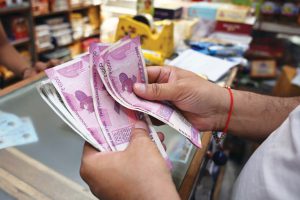BLOOMBERG
Indian central bank’s policy to keep the rupee stable at weaker levels may make the currency vulnerable to “speculative attacks” in case of large risk events, according to Australia & New Zealand Banking Group (ANZ) .
Policymakers are focused on bolstering manufacturing and exports, but it’s not without costs, economists Dhiraj Nim and Sanjay Mathur wrote in a note.
“An engineered decline in INR volatility also dampens the incentive to hedge among exporters and importers,” they said. “These agents thus run the risk of getting caught unprepared when volatility picks up, say due to an exogenous event, stoking future swings in the currency. It also raises the probability of speculative attacks on the currency, in case of a large external risk event.”
The Reserve Bank of India has absorbed most of about $19 billion of inflows into local stocks and bonds this year, helping it beef up foreign exchange reserves and prevent appreciation in the rupee.
The Indian rupee has the lowest implied volatility in emerging markets, according to data compiled by Bloomberg.
A spokesperson for the central bank didn’t immediately respond to an email seeking comments.
Even though the RBI has repeatedly said the rupee’s exchange rate remains market-determined, ANZ thinks the currency’s movement over the last two years is the evidence of a likely shift in its policy to keep it stable and relatively undervalued among peers.
Considering that most of the global factors spurring depreciation in Asian currencies have eased, the rupee would likely be trending around 80.5 per dollar, if it followed the trend in Asian peers, the economists wrote.
 The Gulf Time Newspaper One of the finest business newspapers in the UAE brought to you by our professional writers and editors.
The Gulf Time Newspaper One of the finest business newspapers in the UAE brought to you by our professional writers and editors.
